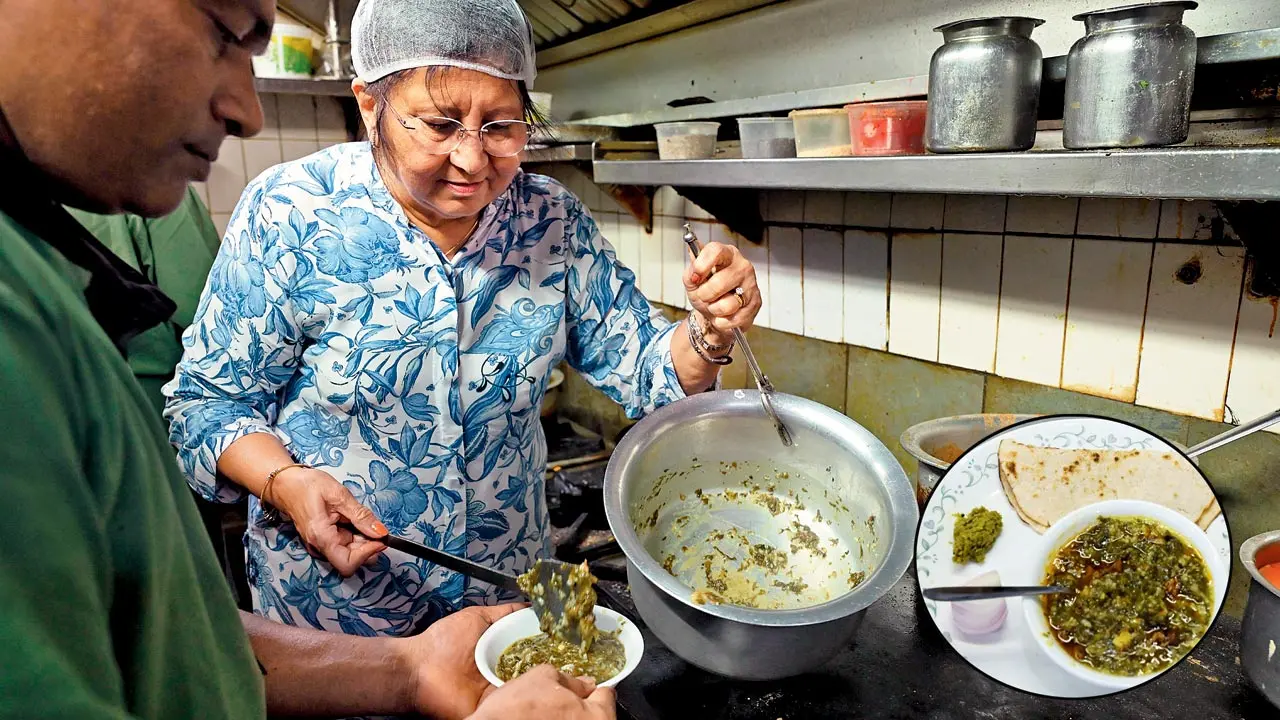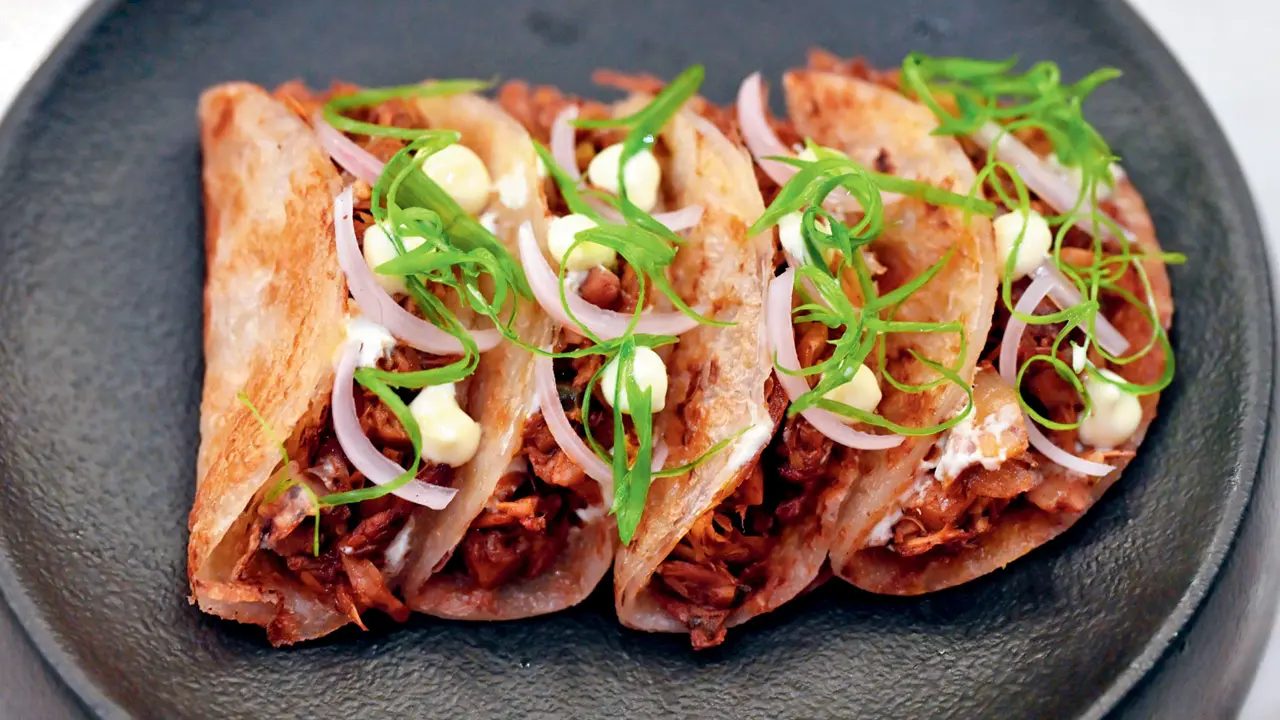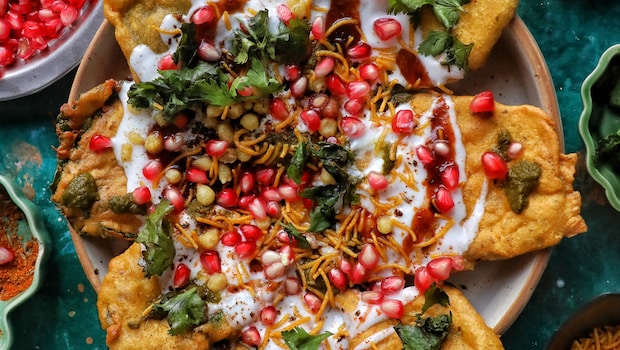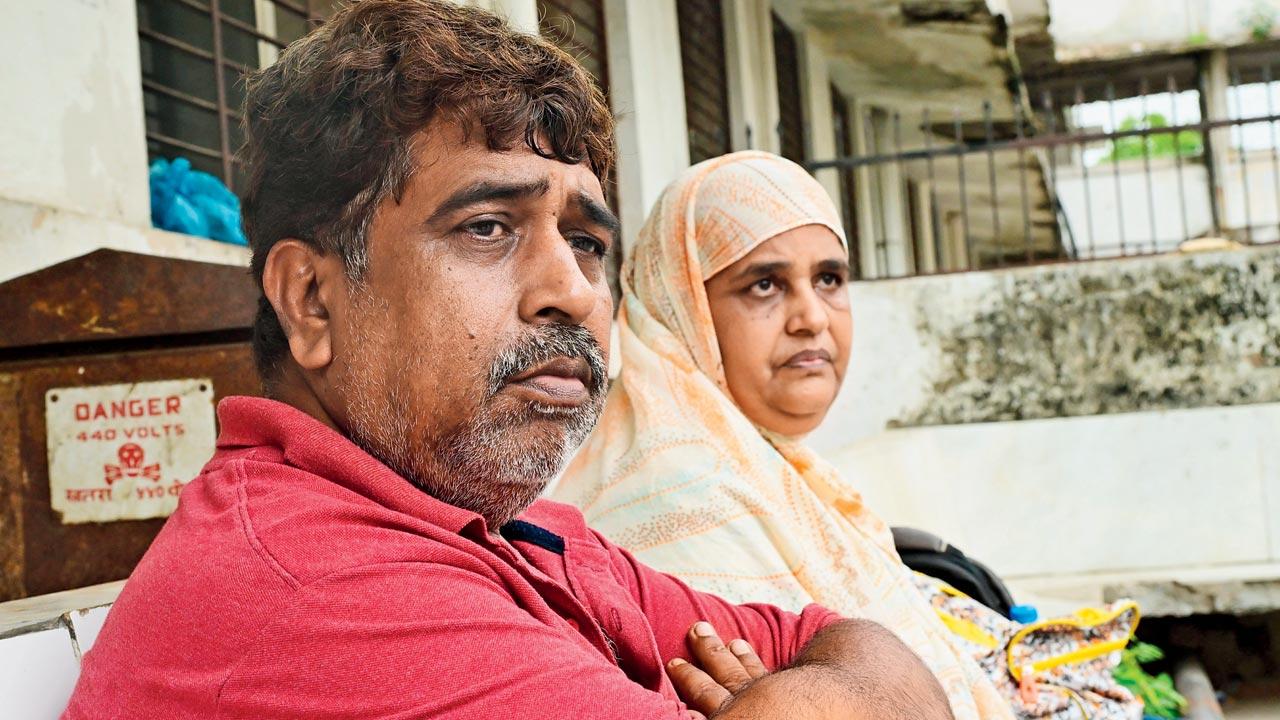
Last week, a friend shared a photo of his lunch on social media — Ambadi chi bhaji at Gypsy Corner in Shivaji Park. The post came with a memory of his late mother making the dish with love every monsoon. A Maharashtrian staple, ambadi — or sorrel leaves — is a green with a sharp, sour edge.
We reached out to Smita Limaye, who played an instrumental role in making Gypsy Corner — alongside her husband, Rahul in 1986 — come to be known for its traditional Maharashtrian fare. The eatery has built a loyal following over the decades, and on Tuesdays, they serve Ambadi chi bhaji with bhakri — a pairing that’s as seasonal as it’s nostalgic.
Green, with a sharp sourness, ambadi is available all year round
“The restaurant version is a little different from how I make it at home,” says Limaye. “We Brahmins often add a bit of jaggery, but not everyone prefers that sweet note, so we leave it out at the restaurant.” She also shares her quiet joy in picking fresh vegetables from the local market — “It just makes me happy,” she smiles. In Maharashtra, it is made with rice kani (rice that is washed, dried for a day, and gently pounded until broken) instead of gram flour, which is used in other regions.
At home, Limaye starts making it by cleaning and soaking the ambadi leaves — stems removed — then draining and boiling them for five minutes, retaining just a little of the cooking water. In a hot pan, she heats oil and, in order, tempers mustard seeds, cumin and hing, then adds dried and green chillies. Next, add the drained leaves, six crushed garlic cloves, a pinch of turmeric, and some soaked, cooked peanuts. Finally, she stirs in rice kani with some of the leftover water from boiling the leaves until the mixture reaches a soft, batter-like consistency. A final seasoning of salt — and jaggery, if desired — yields a sal-sal (semi-dry) bhaji that’s perfect with bhakri or simply rice.
Roopa Nabar prepares the chicken version of gongura
In Assam, it is called Mesta tenga and is made with fish and in Hyderabad, it is known as Bagari ambade ki bhaji, but most of Andhra Pradesh also refers to it as gongura. This sharply sour green is often cooked with meat or prawns. Chef and cookbook author Roopa Nabar, a resident of Vile Parle, speaks fondly of the Konkani version, which includes black vatana for added texture. “The way my mother-in-law from Belagavi made it was beautifully simple — she would temper it with green chillies, onions, and garlic. It was delicately flavoured, yet distinct.”
Roopa Nabar
Beyond taste, ambadi is nutritionally rich. It’s a good source of vitamins A, B6, C, B1, B2, and B9, as well as iron, protein, folic acid, antioxidants, and healthy lipids. “Delicious and full of nutrients,” as Nabar puts it, this leafy green is one of those rare ingredients where flavour and function meet.
Smita Limaye’s Ambadi chi bhaji
“Ambadi is naturally very sour, which is why we boil it before cooking — to mellow the tang. The sharpness is strong, and that’s where the rice kani helps to balance it out. It comes in small bunches, with red stems and green leaves that look a bit like fig leaves, only smaller. You chop it just like any other leafy green. While it’s available throughout the year, it flourishes during the monsoons, and often grows in backyards. Light on the stomach and easy to cook, its high content of slowly digestible starch makes it ideal for supporting gut health — especially during the rainy season, when infections often disrupt the body’s balance of good bacteria. It is especially made during Ganesh Chaturthi. You even get the fruit of the gongura plant — roselle — which gives a beautiful red colour and tang. In villages, it’s used to make sherbets or even a light stew — it’s surprisingly tasty,” reveals Nabar.
“My son Gaurang, who lives in the UK, loves it. Every time he comes home, he asks for Ambadi chi bhaji and packs some to take back with him. I used to love it as a child, and now watching him enjoy it makes me relive those memories all over again,” Nabar signs off.
Gongura chicken
INGREDIENTS
. 750 gms chicken pieces on bones
. 1 tbsp minced garlic
. 1 tbsp ginger garlic paste
. 1 tbsp poppy seeds
. 2 green chillies, finely chopped
. 1 tsp garam masala
. 1 tsp cumin seeds
. 1 tsp cumin powder
. 1 tsp coriander powder
. 1 tsp chilli powder
. 2 onions, finely chopped
. 1 bowl of gongura leaves, finely chopped
. Oil for cooking
. Salt to taste
Gongura chicken
METHOD
Heat a tablespoon of oil in a kadai, sauté minced garlic and chopped green chilli for a minute. Add chopped, rinsed, and drained gongura leaves and cook for two minutes until soft, and the colour turns pinkish-brown. Set aside.
In another kadai, heat 2 tbsp oil, add ginger-garlic paste, then chopped onions. Cook on low until pink. Add cumin seeds and ground poppy seed paste, then add chicken and stir on high for a minute.
Season with salt, cumin, coriander, garam masala, and chilli powder. Add ½ cup water, cover, and simmer for 10 minutes. When the chicken is nearly cooked, add the gongura mix, cover, and cook for another five minutes. Garnish with coriander and serve with rice or chapati.
Recipe courtesy: Roopa Nabar














